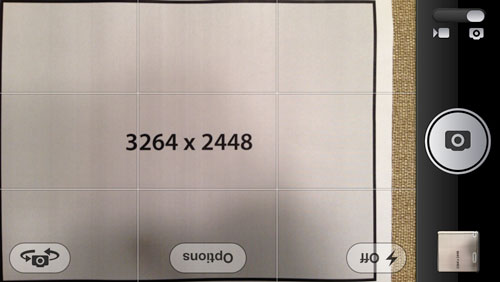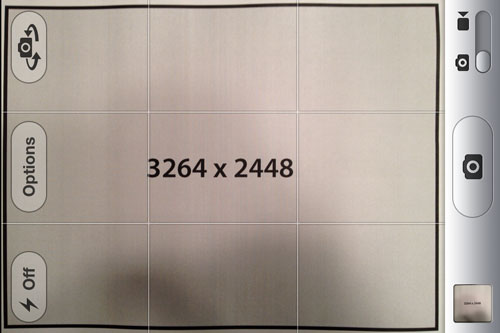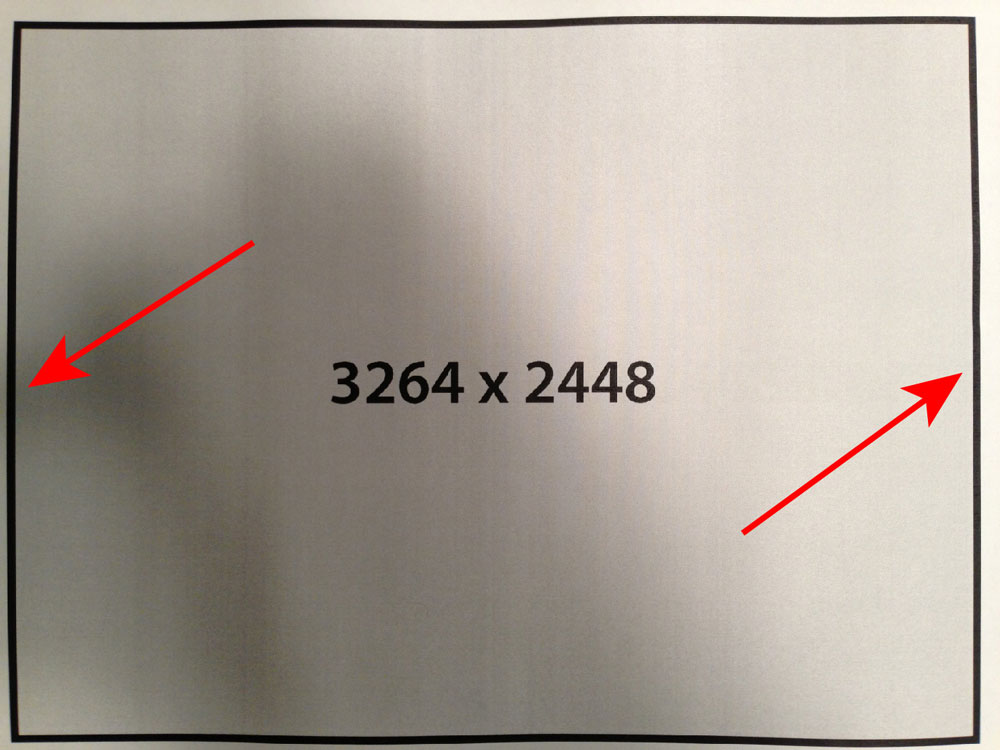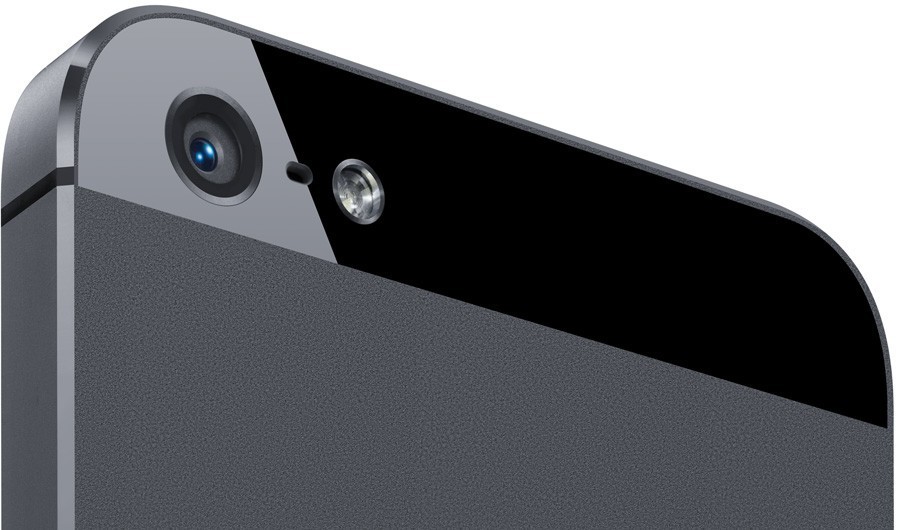
The iPhone 5 has been out for two days now. Those who were fortunate enough to get their pre-orders in the first couple of hours have had the weekend to play with Apple’s shiny new bauble.
You can read more detailed reviews of how the 5 functions as a phone elsewhere. I’ve spent the past two days putting the iPhone 5’s camera through its paces, finding what works in the new camera (a lot), what doesn’t (a couple of things), and what is overhyped (nothing — it lives up to the hype). There are a couple of issues with the iPhone 5 camera that I’m surprised none of the other outlets have picked up on yet.
Here is Life In LoFi’s hands on review of the iPhone 5 from an iPhoneographer’s point of view. Get a cup of coffee. This one’s a long one. >>>>
The iPhone 5
Let me start by saying flat out that the iPhone 5 is an amazing phone. I have always loved the form factor of the iPhone 4 and 4S and still think the 4S is one of the greatest overall mobile phones ever created. It’s powerful, sleek, shiny and has a great camera.
This time, the killer new feature that said to me “Upgrade!” was not the camera, though. I bought the iPhone 5 because of the speed and the LTE Network capabilities — mainly the network. When I travel, I often use my iPhone as a modem to avoid the annoying $10-$20 a day internet charges some hotels have. Also, I sometimes find myself in extended stays in internet-deprived facilities (Pop, DSL is so 1990’s….). For me, the faster device and faster internet were worth the upgrade.
After spending a couple of days with the iPhone 5, I can say without a doubt that it improves upon nearly every aspect of the 4S — the phone and the camera. It lives up to the hype and more.
The phone itself feels noticeably lighter than the already light iPhone 4S. Apple accomplished this without making the phone feel cheaper. The iPhone 5 is also a little thinner than its predecessors, but not really noticeably so.
The phone itself is almost half an inch taller than previous iPhones, although the width of the device remains the same. Because it’s adapted from the familiar form factor, my large fingers haven’t had any troubles fumbling around or using the new, larger screen. I appreciate the extra screen real estate in Safari, the extra few lines in Mail, and my swelling app collection appreciates the 44 new available slots for new apps and folders.
Everything about the iPhone 5 is faster than the iPhone 4S. Noticeably faster. Safari feels snappier. Apps are more responsive and take less time to process.
I really like the new Lightning connector. It’s much easier to insert than the old 30-pin connector. It snaps into place and feels like a more solid connection. The connection from my Mac to the iPhone itself is faster. Syncs seem to take less time on the 5. In my tests, loading thumbnails into Image Capture took about half the time as the 4S. Using the Lighting cable, image transfers are significantly faster on an iPhone 5.
Although many iPhone users have a lot invested in 30-pin connector accessories, I think the new digital Lightning connector is a huge improvement over the older technology.
Brushed aluminum now encases the phone including most of the back, giving the phone a subtle textured feel that, because it’s metal and not rubberized plastic, helps the phone maintain its premium look and feel. I have a black iPhone 5 and was worried about scratching the case, so mine was wrapped in a modest, protective Incipio case right away. According to the recent MacFixIt teardown, the black iPhone 5 case is susceptible to scratches. While I like the look and feel of the new iPhone, I prefer the look of the 4 and 4S with its sturdy Gorilla Glass back.
The lens cover is still flush with the back of the iPhone 5. Instead of the easily-scratched plastic lens cover, the new covers are made of sapphire are are reportedly much more scratch resistant. I’ll take Apple’s word for it. I wasn’t about to scratch test my new iPhone. Any iPhone case will help prevent any possible scratches.
One of the big issues many iPhone users have to consider is their existing set of iPhone accessories. Practically none of your existing cases, connectors and lenses will work with the iPhone 5. If you have an OlloClip, DiffCase, OWLE BUBO, Mophie case, the iPro lenses — none of those accessories will currently work with your 5 because of the difference in the iPhone 5 case. There’s an iPhone 5-compatible OlloClip in the works, as I’m sure there are new Mophie cases. Any case-based lens system won’t currently work with your iPhone 5 until the developer releases a 5-compatible case. You’ll either have to repurchase new versions of the accessory, or at the very least a new case to mount the lenses. If you rely on third-party camera accessories, this is a big factor to consider.
iPhone 5 Camera
Over the years, Apple has placed a special focus on developing and improving the iPhone’s camera. Even the lo-fi 2 megapixel camera of the original iPhone 2G was better than many of the cell phone cameras of its time.
In this year’s announcement, Apple announced several minor improvements to the iPhone 5’s camera. Resolution was not bumped up — the 5 stays at 8 megapixels. If you’re just looking at specs, the new camera is underwhelming. However, in actual use, the iPhone 5’s camera is a lot better than the specs indicate. The new camera surprised me and outperformed many of my expectations, although I found a few big problems with it that you should consider before upgrading.
Like everything else about the iPhone 5, the new camera is extremely fast. Shot-to-shot time is more than twice as fast as an iPhone 4S. Shooting continuously, I was able to get 10 shots in just 3.5 seconds on the iPhone 5 — that’s over 2 captures per second on an iPhone camera that doesn’t have a dedicated burst mode. In comparison, the iPhone 4S took about 10.6 seconds to capture 10 exposures. The cache seemed to fill up and slow down shutter response time the longer I shot.
Color and Clarity
Although physically the camera sensor in the new iPhone resembles last year’s model, its color and sensitivity have improved, in some cases significantly.
My test shots were basically snaps, taken side by side. They were not taken under controlled lighting conditions. In my images, I looked for color saturation, color accuracy, vibrance, white balance, highlight detail and shadow detail.
I loved the almost surreal color saturation of the iPhone 4. It gave the 4 a signature color look. The camera on the iPhone 4S, while improved, was more subdued, balanced and natural-looking. Compared to the 4, I always color on the 4S was good but looked a little flat.
In my tests, in normal mode, colors were more vivid and more natural-looking, especially greens. The iPhone 5 has improved daytime color balance. In many cases, the differences were subtle, but in my tests I noticed color depth in the 5 that wasn’t there in iPhone 4S images. In particular, greens seemed more vibrant and natural to me. Earth tones had more body and reds really jump out. It’s not a “let’s redefine color” difference, but the photos from the 5 look a little better not only onscreen but looking at them close up as well. The difference may not be significant under most shooting conditions, but it’s there and enough to give an image a subtle boost.
iPhone 5 color takes a step back to the rich color of the iPhone 4, and that’s a very good thing. But while the colors in the iPhone 4 were vivid and saturated, the colors of the iPhone 5 are vibrant and more natural.
Automatic white balance on the iPhone 5 has improved. In fact, the worse the lighting conditions, the better the AWB seemed to perform for me. Overall color balance seems closer to what I see than in previous iPhones. The iPhone 5 has significantly improved white balance under both incandescent and fluorescent lighting. Under warm lighting in particular, the iPhone 5 compensates for the yellow and orange casts found with previous iPhones. I was pretty amazed at how balanced and natural-looking indoor shots looked.
The iPhone 5 does not have the “green spot” in image center when shooting under fluorescent lighting. This only seemed to effect the iPhone 4 camera. Color is smooth edge-to-edge.
Low Light
One of the claims of the new iPhone 5 was better shooting in low-light. How about amazing shooting in low light? Under low light conditions, the iPhone 5 performed significantly better in every possible way than any previous iPhone.
Although the iPhone 5 still has the same f/2.4 equivalent aperture as the 4S, through magic and technology, the sensor is able to see more detail under low light conditions. Much more. Both the iPhone 5 and 4S let me capture an image under low light, but the images from the 5 were enhanced in-camera to have much less noise and much greater detail. See the test images and details below. The difference in the details is pretty stunning. The “original” photo is adjusted to match the actual light levels of the shot.
What really surprised and impressed me was that the iPhone 5 can capture an image with detail and color under extremely low light conditions — almost dark, light from another room conditions. Where the same shot from the 4S was dark and the subject matter barely perceptible, the iPhone 5 was able to capture detail and color. Even with the visible noise in the raw image, it’s still pretty impressive.
The significantly increased low light sensitivity is actually a big improvement over the iPhone 4S camera. Check out the samples below. The iPhone 5 image is certainly at a better starting point to work to a usable state. It’s pretty cool!
HDR Mode
Until the iPhone 5, I haven’t been a fan of HDR on the iPhone. Third-party photo apps add halos, artifacts and unnatural color shifts to an image. Apple Camera’s built-in HDR, while a true bracketed exposure HDR, looked flat on the 4S. I rarely used it. I found i could get better, more predictable results from running my images through a Dynamic Range Correction photo app instead.
HDR is visibly improved on the iPhone 5. In HDR mode, Colors have the greater vibrance and saturation, but without as much of the unnatural color casts found in previous. I got better details in the highlights and shadows with better overall color throughout the image. I’ll be more likely to use Apple HDR on an iPhone 5 than I was in the past.
Panoramas
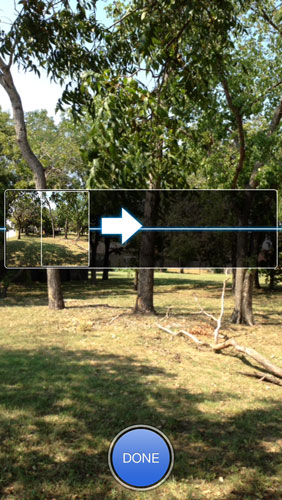 Apple’s new Panorama mode (also available on the iPhone 4S using iOS 6) is as cool and easy to use as advertised. The pano screen guides you through. An onscreen indicator helps you keep the iPhone level while you expose the pano.
Apple’s new Panorama mode (also available on the iPhone 4S using iOS 6) is as cool and easy to use as advertised. The pano screen guides you through. An onscreen indicator helps you keep the iPhone level while you expose the pano.
Panos are captured in one smooth motion, not in panels like many other pano app. The huge 28 MP panoramas are crisp, clear great-looking panos with almost none of the artifacts, mis-aligned panels and ghosting of most third party pano apps. One of my pano test images captured children playing in a park. There was no movement or ghosting in the image. Pano mode does an excellent job of managing these artifacts. Image quality is so high, you can crop from just about anywhere in the image to use in a more traditional aspect ratio.
It only shoots horizontal panos, although you can rotate the iPhone 90 degrees to shoot vertical ones as well. It can’t combine tiles vertically and horizontally like the excellent AutoStitch Panorama. It’s a straightforward panorama and won’t let you create some of the cool distortions that AutoStitch can create. However, with its ease of use, high-quality and high-resolution output, many of the lesser, low-quality pano apps have just been rendered irrelevant. For straightforward panoramas, The iPhone 5’s pano mode creates by far the best-quality panoramas on iOS.
iPhone 5 Camera Problems
Despite the overall excellent quality of the iPhone 5’s camera, I found a few issues with the camera you need to be aware of. While these are not dealbreakers for me, they’re out there and something you need to consider when upgrading.
iPhone 5 Camera Viewfinder Issue
The new screen of the iPhone 5 is larger with a 16:9 aspect ratio that’s optimized for video. When I first opened the camera app on the 5, I saw that the toolbar on the bottom of the screen was larger. I thought this would compensate for the taller screen, but it doesn’t completely.
Apple Camera’s viewfinder is inaccurate. For accurate composition and cropping in camera, you will need to shoot with a third-party camera replacement app for accurate framing. Because of how Apple’s Camera app fills the new longer screen, the aspect ratio of the viewfinder is just a little longer than the 4:3 aspect ratio of the images it captures — an aspect ratio of about 4.43:3. To some, myself include, that’s a huge difference.
What you see in the viewfinder is not what you’ll get in the image. The viewfinder cuts off a little bit of the image on the long sides of the viewfinder. Objects that you do not see when composing your shot may find themselves in the frame of the actual image.
A digital viewfinder that doesn’t match output is a huge oversight by Apple and one that could have easily been fixed with a simple matte bar at the top of the viewfinder. With Apple’s emphasis on the quality of the iPhone’s camera, giving the iPhone 5 a Camera app that’s as effective as an analog viewfinder is a inexcusable mistake.
DON’T PANIC! This problem only effects Apple’s Camera app, NOT the actual camera of the iPhone 5 itself!
In recent iOS updates, Camera app had become very usable. I really like the convenience of accessing the camera from the lock screen. It’s an easy access camera of first choice. I’ll still use Camera for quick snapshots, but all of my critical shooting will be shot by ProCamera or 645 PRO.
iPhone 5 Lens Barrel Distortion
One of the issues that Apple had to overcome was fitting the camera into a thinner iPhone. That means a shorter focal length from lens to sensor. Apple may have used a slight more convex — rounded, if you will — lens to keep the same field of view as the 4S.
My iPhone 5 shows slight lens barrel distortion around the short edges of the frame. Although the camera units and optics are similar, the iPhone 4S does not show this same distortion. It’s a hardware issue and may be one of the signature “quirks” of the iPhone 5. Apparently, thin was the priority over camera quality.
iPhone 5 4″ Retina Display
Once the image is in the camera roll, the interface an iPhonegrapher will be working with the most is the iPhone’s screen. The new, longer 4″ screen on the iPhone 5 is a visible improvement over previous iPhones when compared side-by-side. Not only is there a little more screen real estate, the new screen is noticeably brighter at the same adjustment levels. It’s richer and more vibrant. Colors jump out onscreen. It’s a beautiful screen.
Apple had been promoting that the new screen of the iPhone 5 is essentially color calibrated to the sRGB color space, but I’m not sure about the color accuracy of the new screen, though. To me, the warm point of my screen is a little off. Viewing a test image simultaneously on my iPhone 5, an iPhone 4S and a color calibrated monitor, the iPhone 5’s screen looked like it had a slight yellow cast. Colors also seemed a little too saturated when compared to the reference image on my monitor. The white point of the “uncalibrated” iPhone 4S seemed closer to calibration than the new iPhone 5 and colors overall better matched the test image onscreen.
This is my critical eye of a photo retoucher. The iPhone 5 screen is very pretty and most of us don’t use our iPhones for critical color moves. For most uses, the iPhone 5 screen is very close to accurate. It’s definitely awesome for everyday use. To my eye, though, while the colors are richer and more vibrant, the screen itself doesn’t precisely match what it should.
“Should I Upgrade?”
The iPhone 5 is a really sweet phone! Performance-wise, it blows the doors off any previous iPhone. The new camera isn’t killer, but it’s got a bunch of great new features that add up to a good camera upgrade. Much of what’s wrong with the camera can be fixed with a software patch, like the Camera viewfinder and the white point of the iPhone’s screen. I upgraded to the 5 from an iPhone 4S. Many users skip a generation or two. Overall, I really love this iPhone and there’s no way I’m downgrading back to the 4S.
If you have an 3G, 3GS, or 4, this phone will be a shockingly great upgrade for you. The feel and speed of the device are much slicker than the device you are using now. The camera is a significant upgrade from the ones you’re using now. For owners of older iPhones, the iPhone 5 is a “killer” upgrade. Unless you’re really concerned about the issues I mentioned above, this upgrade is a no-brainer if you have the means.
If you are a current iPhone 4S owner, you might want to think about upgrading. The 4S is still a pretty sweet and fast phone. The 8 MP camera is close enough in quality the the 5, but without the anomalies of the new lens. You’ll have to weigh whether the new improvements are worth it for you.
Consider the rest of the phone, though, when upgrading. Do you need faster data? That alone may the deciding factor. Living in an area that doesn’t have the new, fast LTE network yet renders the feature moot. While I really like the improvements in the new camera — and I like them a lot more than I thought I would — if it were not for the new, faster data, I probably would have sat this upgrade out and waited for the 5S next year.
Overall, I think the iPhone 5 is a great new iPhone. The new camera has improved and image quality is very good. It won’t replace your Nikon or Canon DSLR, but it easily rivals a point and shoot.
Like many of the iPhone cameras that have come before, the 5 camera has its signature quirks. I love the phone. In many ways the camera has been improved quite nicely. For me, the benefits of the phone outweigh the few issues with an otherwise great camera.
I highly recommend the iPhone 5. The camera is great, but has just a couple of issues. It’s life… in lo-fi. I’ll shoot around the quirks.
=M=
~~~~
Whether or not you have an iPhone 5, let us know what you think about Apple’s latest camera — um I mean iPhone in the talkback below.
..
UPDATE 01: Added a bit about the new sapphire lens cover. Also cleaned up some text for readability. =M=











